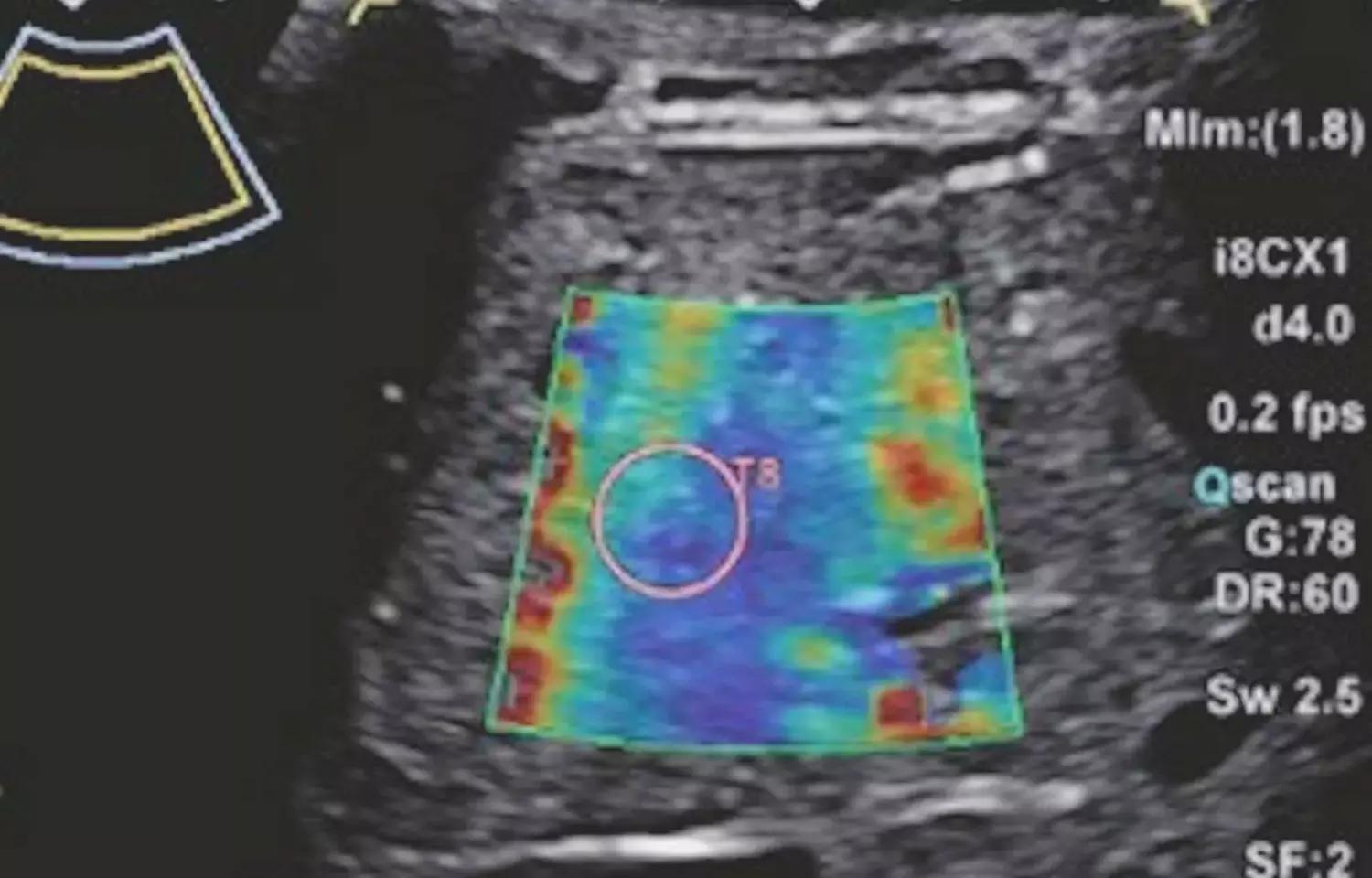For Liver Disease In Children, Ultrasound Correlates Well With MRI: Study
- byDoctor News Daily Team
- 22 July, 2025
- 0 Comments
- 0 Mins

USA: A recent study in the journal Radiology has found a moderate to high correlation between ultrasound shear-wave speed (SWS) and MR elastography–derived stiffness in children, adolescents, and young adults with known or suspected liver disease. US SWS predicted an abnormal liver shear stiffness with high performance.
To identify changes of liver disease, quantitative US techniques can be used but there is a sparse data in relation to their diagnostic performance and relationship to MRI measures. Andrew T. Trout, University of Cincinnati College of Medicine, Cincinnati, Ohio. and colleagues aimed to define associations between quantitative US and MRI measures of the liver in children, adolescents, and young adults with liver disease in a prospective study. They also aimed to define the predictive ability of quantitative US measures to detect abnormal liver stiffening and steatosis defined with MRI.
In the study, study, consecutive patients aged 8–21 years and known to have or suspected of having liver disease and BMI less than 35 kg/m2 underwent 1.5-T MRI and quantitative liver US during the same visit at a pediatric academic medical center between April 2018 and December 2020. Acquired US parameters aming other included SWS and attenuation coefficient.
Comparison was made between US parameters with liver MR elastography and liver MRI proton density fat fraction (PDFF). To assess associations and determine the performance of US relative to that of MRI, they performed Pearson correlation, multiple logistic regression, and receiver operating characteristic curve analyses.
The evaluation of a total of 44 study participants (mean age, 16 years ± 4 [SD]; age range, 8–21 years; 23 male participants) was done.
Findings of the study were as follows:
There was a positive correlation between US SWS and MR elastography stiffness (r = 0.73).
US attenuation was positively correlated with MRI PDFF (r = 0.45).
For the prediction of abnormal (>2.8 kPa) liver shear stiffness, SWS (1.56 m/sec [7.3 kPa] cutoff) had an area under the receiver operating characteristic curve (AUC) of 0.95 with 91% sensitivity (20 of 22 participants) and 95% specificity (20 of 21 participants).
For the prediction of abnormal (>5%) liver PDFF, US attenuation (0.55 dB/cm/MHz cutoff) had an AUC of 0.75 with a sensitivity of 73% (eight of 11 participants) and a specificity of 73% (24 of 33 participants).
To conclude, "ultrasound shear-wave elastography can correlate well with MR elastography for measuring liver stiffness in children and young adults with known or suspected liver disease."
According to the authors, their findings warrant discussion and that future research is required for validation, as well as evaluating the predictive performance of these ultrasonic measures across different system manufacturers.
Referennce:
Alves VPV, Dillman JR, Tkach JA, Bennett PS, Xanthakos SA, Trout AT. Comparison of Quantitative Liver US and MRI in Patients with Liver Disease. Radiology. 2022 May 24:212995. doi: 10.1148/radiol.212995. Epub ahead of print. PMID: 35608446.
Disclaimer: This website is designed for healthcare professionals and serves solely for informational purposes.
The content provided should not be interpreted as medical advice, diagnosis, treatment recommendations, prescriptions, or endorsements of specific medical practices. It is not a replacement for professional medical consultation or the expertise of a licensed healthcare provider.
Given the ever-evolving nature of medical science, we strive to keep our information accurate and up to date. However, we do not guarantee the completeness or accuracy of the content.
If you come across any inconsistencies, please reach out to us at
admin@doctornewsdaily.com.
We do not support or endorse medical opinions, treatments, or recommendations that contradict the advice of qualified healthcare professionals.
By using this website, you agree to our
Terms of Use,
Privacy Policy, and
Advertisement Policy.
For further details, please review our
Full Disclaimer.
Tags:
Recent News
Merck Keytruda wins European Commission nod for lo...
- 30 October, 2025
UP NEET 2025 round 3 allotment results postponed
- 30 October, 2025
Achin Gupta to succeed Umang Vohra as Cipla MD, GC...
- 30 October, 2025
Mumbai shocker: KEM Hospital doctor stabbed by col...
- 30 October, 2025
Daily Newsletter
Get all the top stories from Blogs to keep track.


0 Comments
Post a comment
No comments yet. Be the first to comment!